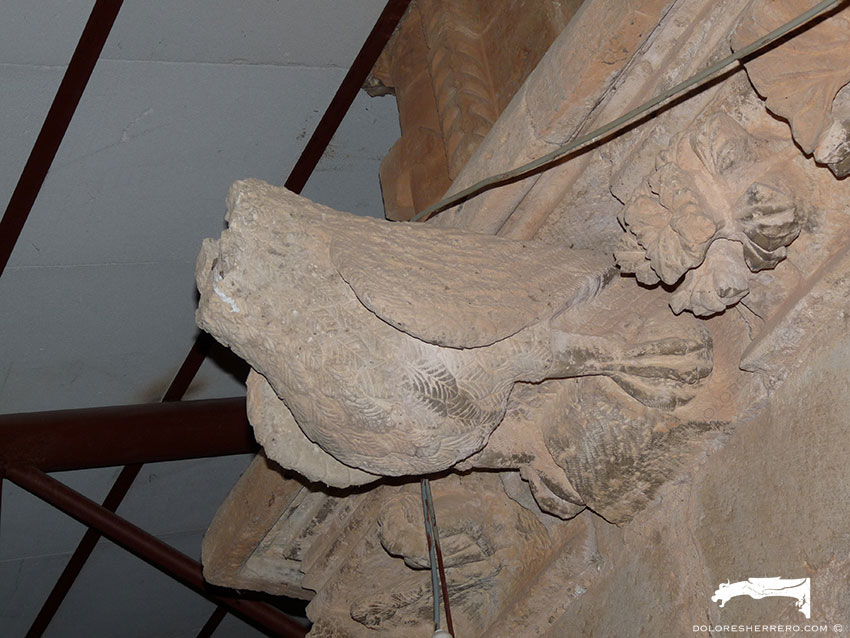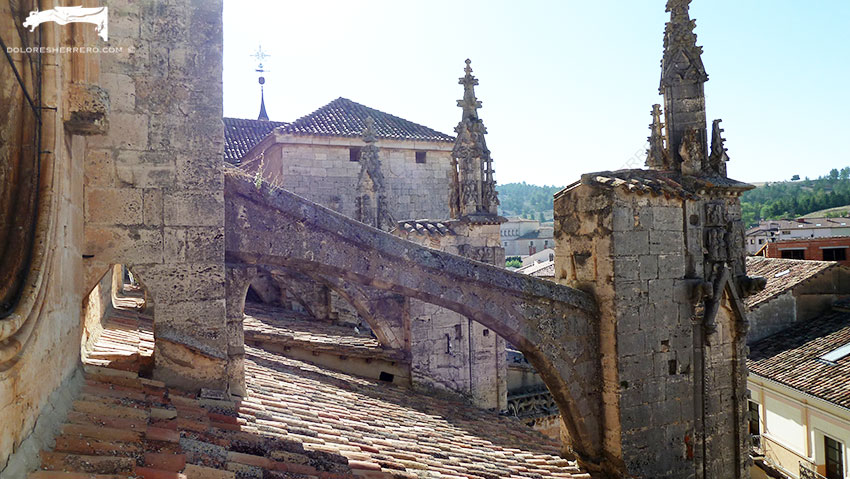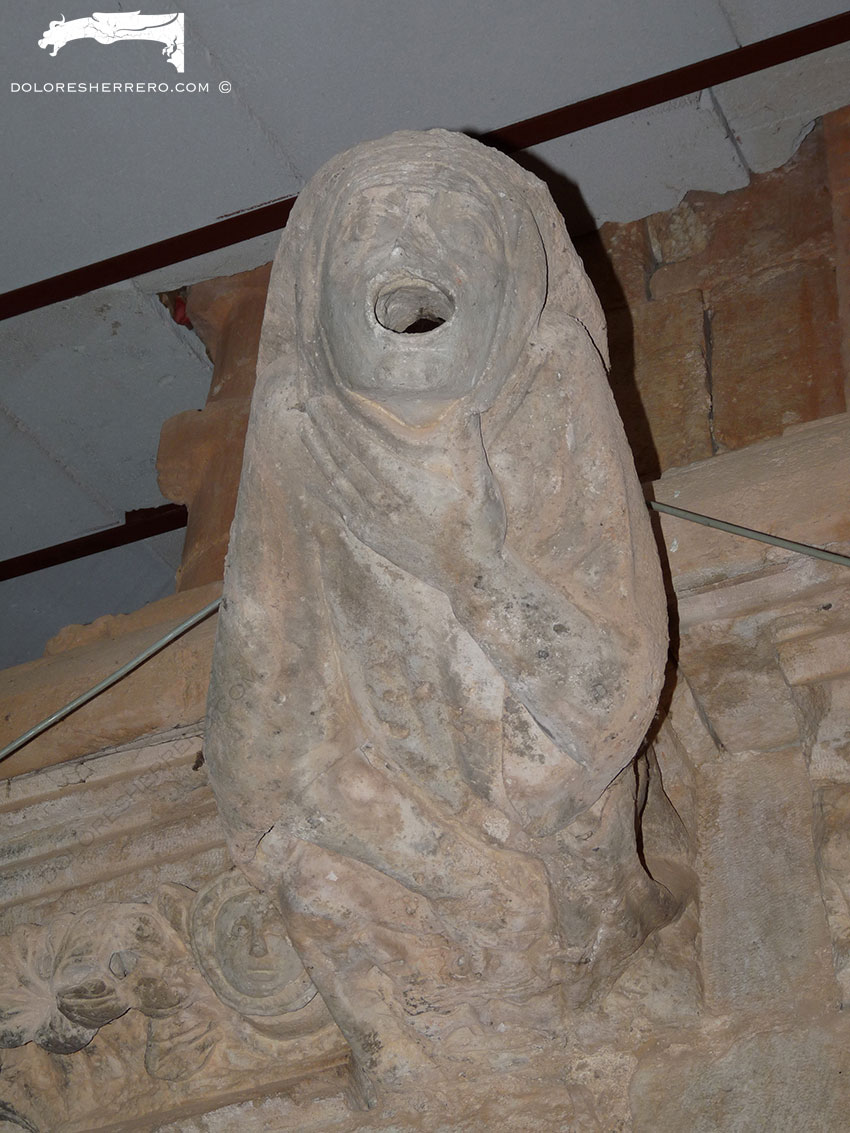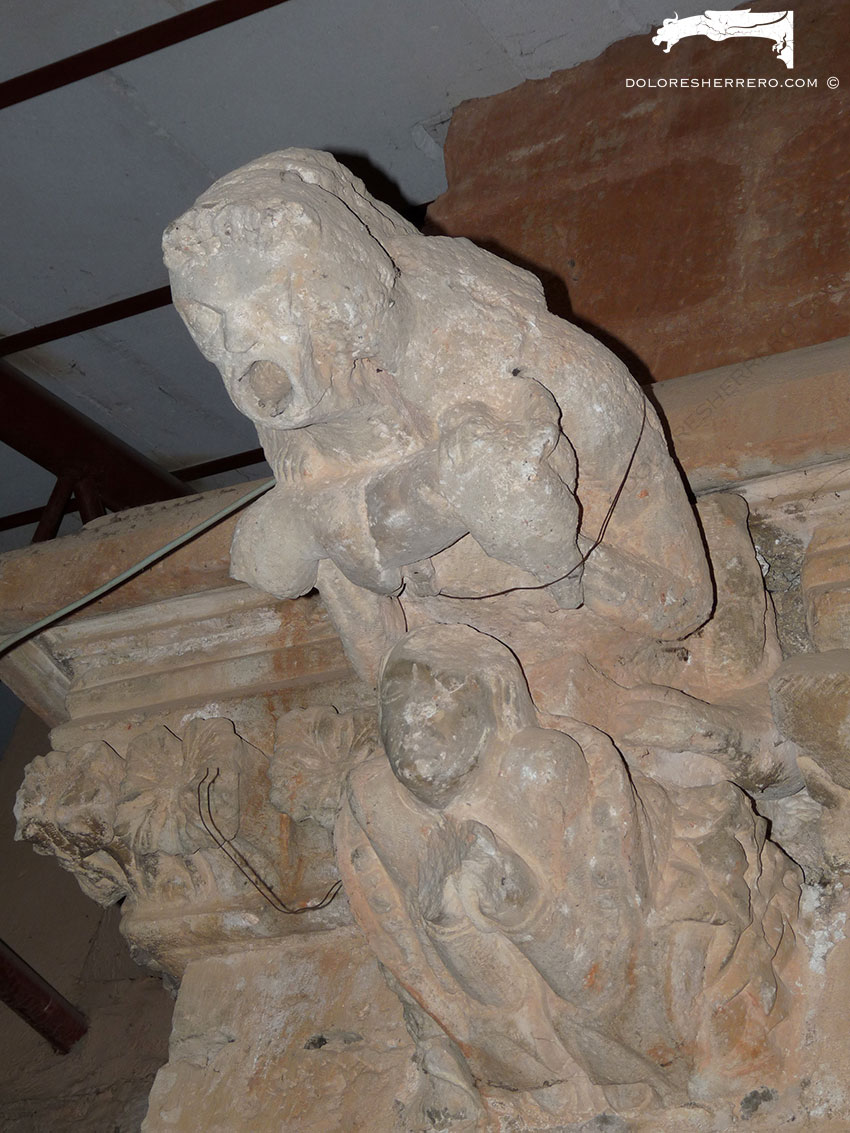Today we are going to talk about the most exceptional and astounding gargoyles of the Cathedral of El Burgo de Osma (Spain). These are the wonderful, “secret” gargoyles in the north aisle of the cathedral in this beautiful town in the province of Soria.
Although no documents remain, foundation of the early Romanesque cathedral is attributed to St. Peter of Osma, bishop of the diocese between 1101 and 1109. However, this early building was replaced in the 13th century by the Gothic cathedral, construction of which began in 1231, during the episcopate of Juan Díaz, chancellor of Ferdinand III of Castile. The west portal is considered a prime example of the transition from Romanesque to Gothic.
Although this stunning cathedral has gargoyles on the outside, unfortunately some of them have been seriously damaged by the passage of time.
However, we never imagined what the interior of this cathedral held in store for us. There they were, shrouded in the silent shadows, a small vestige of the 12th century that we want to share with you. We say small because there are only four gargoyles, but what they lack in numbers they more than make up for in beauty and historic and artistic value.
These gargoyles are tucked away in the hidden north aisle adjacent to the cloister.

The first figure is a woman wearing a cloak, who has a very expressive face (pain, despair) and a wrinkled forehead. She is raising her left hand to her throat, in a gesture indicating difficulty breathing or torment —recall Rebold Benton’s interpretation of this gesture, relating it to a warning about the dangers of misusing everything that travels via the throat (food, drink, words), or to the story of Adam and Eve and the apple, and thus to original sin and the fall—. With her right hand, she is grabbing something that looks like a horn, located on the top of a head with a human face, a wrinkled forehead and an expressive mien. This might represent a sinner repenting her misdeeds; there is a very similar gargoyle at Bordeaux Cathedral.
- El Burgo de Osma Cathedral (Spain)
The next gargoyle has a human trunk, arms and head, but behind and beneath it we can see animal feet. It has curly hair and is wearing a short mediaeval cloak. The gargoyle’s face is expressive —it seems to be screaming— and in its hands, it’s holding a small quadruped that looks like a lamb. The lamb is a symbol of Christ who, as meekly as a lamb, offered himself in sacrifice to redeem humankind. Below is a figure of a man with his hands held together, apparently in prayer or pleading (possibly a sinner), who may be emerging from a large mouth with teeth (devil). Although the type is somewhat difficult to identify, it seems to be an anthropomorph with animal hind legs, which is holding a lamb with both hands and is standing on a person at prayer. As with the previous figure, the gargoyle is probably intended to depict sin and the struggle between good and evil, in this case the lamb (Christ) versus a monstrous anthropomorphic mouth (the devil).
There is also an anthropomorph with the body of an eagle and a human head with curly hair. Its neck skin (dragon-like) and its prominent windpipe endow it with a demonic air. Below it is another head that could be that of a ram (curly fleece and horns). The image of figures holding lambs or rams appears in other artistic mediaeval representations (13th century bestiaries, capitals, etc.).

Lastly, we have a gargoyle of unrecognizable type because it is headless. It has the body of an eagle and something between its legs that was probably once a head but is now unrecognizable due to deterioration of the stone. Its left leg is grabbing a rounded body, also unidentifiable due to deterioration.

These magnificent and highly expressive gargoyles depict an allusion or reference to sin and the struggle between good and evil. Art and history merge in these four extraordinary figures. Superb and unique, the gargoyles exhibit exceptional sculpting and iconography, and form part of Castile and León’s magnificent heritage.
Bibliography consulted
ARRANZ ARRANZ, J., La Catedral de Burgo de Osma (Soria). Guía turística, Ilmo. Cabildo de la S. I. Catedral, 1981.
MARIÑO FERRO, X. R., El simbolismo animal. Creencias y significados en la cultura occidental, Madrid, Ediciones Encuentro, 1996.
MARTÍNEZ FRÍAS, J. M., El Gótico en Soria. Arquitectura y escultura monumental, Salamanca, Ediciones Universidad de Salamanca. Publicaciones de la Excma. Diputación Provincial de Soria, 1980.
PALACIOS, F. y FRÍAS BALSA, J. V., Burgo de Osma y sus monumentos, Ingrabel-Almazan, 1975.
REBOLD BENTON, J., Holy Terrors. Gargoyles on medieval buildings, New York, Abbeville Press, 1997.
TARACENA, B. y TUDELA, J., Guía artística de Soria y su provincia, Soria, Diputación Provincial de Soria, 1997.

Doctor of Art History and researcher specializing in the study of gargoyles.
I am Dolores Herrero Ferrio, and my thesis, “An Approach to the Study of Gargoyles of Gothic Cathedrals in Castilla and León”, is dedicated to the study of these fascinating figures.
If you like gargoyles and art history, you will also enjoy my book, “The Gargoyle and Its Iconography,” a book I have written with great care for those interested in the world of gargoyles.
I have created my own Encyclopedia of Gargoyles, a Gargopedia to share with you, where you will discover all the secrets and wonders of these enigmatic sculptures.
I hope you enjoy this Gargopedia as much as I have enjoyed creating it, and remember that each gargoyle has a story to tell, and here you will discover them all.





